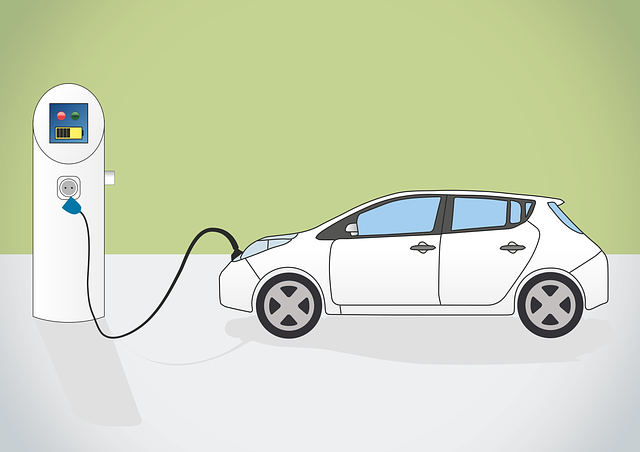Location assessment is critical for EV charging stations, focusing on visibility, foot traffic, and parking proximity. Choose durable, user-friendly stations from reputable suppliers in bustling areas like workplaces or shopping centers. Regularly evaluate accessibility for maintenance and smoother transitions to sustainable transport. For hardware, select high-quality, compatible chargers with smart technology for cost-effective energy usage. Implement cleaning and inspection routines, using recommended agents and maintaining easy access for maintenance. Utilize apps for real-time tracking and early issue identification. Manage power load through grid stability apps and infrastructure mapping to avoid outages. Train staff on basic troubleshooting and charging types for enhanced customer satisfaction. Analyze usage patterns for efficient maintenance scheduling, peak hour identification, and strategic new station placement.
“Elevate your electric vehicle (EV) charging station maintenance with these essential tips. When selecting EV charging stations, consider location and accessibility to ensure optimal user experience. Opt for reliable hardware to minimize downtime. Implement regular cleaning and inspection routines for hygiene and longevity. Manage power load and grid stability to prevent overloads. Train staff on basic troubleshooting for swift issue resolution. Monitor usage patterns to optimize maintenance schedules and enhance overall efficiency.”
- Assess Station Location and Accessibility
- Choose Reliable EV Charging Hardware
- Implement Regular Cleaning and Inspection Routines
- Manage Power Load and Grid Stability
- Train Staff on Basic Troubleshooting
- Monitor Usage Patterns for Optimal Maintenance
Assess Station Location and Accessibility

When setting up EV charging stations, assessing the station location and accessibility is a crucial step in the process. This involves considering factors such as visibility, foot traffic, and proximity to parking areas. For instance, selecting EV charging equipment suppliers who offer durable and user-friendly stations can significantly enhance the overall experience for electric vehicle (EV) owners. By strategically placing these stations at bustling locations like workplaces, shopping centers, or public parks, you ensure that EV charging access is convenient and readily available for all-electric vehicles.
Moreover, evaluating the accessibility of the chosen location helps in understanding any potential challenges or requirements for maintenance and repairs. Regularly assessing these factors not only ensures optimal functionality but also contributes to a seamless transition towards more sustainable transportation options.
Choose Reliable EV Charging Hardware

When setting up or maintaining EV charging stations, one of the most critical decisions is choosing reliable hardware. This includes selecting high-quality EV chargers that are compatible with various vehicle models and charging speeds. Look for brands known for their durability and advanced safety features to ensure a smooth and secure charging experience for electric vehicle (EV) owners.
Investing in top-notch equipment also means considering factors like weatherproofing, especially if the stations are outdoor. Additionally, integrating smart charging technology can optimize energy usage, making it cost-effective. With numerous options available, including fast EV charging locations near me, selecting the right hardware is key to enhancing user experience and satisfaction, especially when it comes to the best time to charge electric vehicles during peak or off-peak hours.
Implement Regular Cleaning and Inspection Routines

Implementing regular cleaning and inspection routines is an essential aspect of maintaining your EV charging stations. Regular maintenance ensures optimal performance and longevity for both the charging equipment and user satisfaction. Start by establishing a comprehensive cleaning schedule, focusing on removing dirt, dust, and debris from all visible areas, including the station’s exterior, connector ports, and surrounding surfaces. Use suitable cleaning agents recommended by the manufacturer to avoid damaging sensitive components.
When selecting EV charging stations for public use, consider models that are easily accessible for cleaning and inspection. Many modern charging apps for iPhone, like those offering real-time location tracking of public EV chargers, also provide maintenance reminders. Regularly checking station functionality, inspecting connections, and testing charging speeds using tools provided by ev charging apps for iPhone can help identify potential issues early on. Remember that keeping your charging stations well-maintained contributes to a seamless experience for electric vehicle owners when searching for convenient public EV charging through platforms that display public ev charging station pricing transparently.
Manage Power Load and Grid Stability

Managing power load and grid stability is a critical aspect of EV (electric vehicle) charging station maintenance. When installing select EV charging stations, it’s crucial to consider the impact on local power grids. High-demand areas require robust EV charging infrastructure mapping software to ensure that the electricity supply can handle the additional load without causing instability or outages. Proper planning and implementation can help prevent grid congestion, which is especially important in remote areas where ev charging solutions are needed most.
Utilizing EV charging apps for Android, such as those that track energy usage and provide real-time data on power consumption, can aid in managing power loads effectively. These applications offer insights into peak demand times and usage patterns, enabling facility managers to optimize charging station placement and usage. By adopting these practices, you contribute to a stable power grid while facilitating the growing adoption of electric vehicles.
Train Staff on Basic Troubleshooting

Training staff to perform basic troubleshooting is an essential aspect of maintaining EV charging stations, ensuring a seamless experience for all-electric vehicle (AEV) owners. When selecting EV charging equipment suppliers, look for those that offer comprehensive training programs along with their products. This empowers your staff to identify and resolve common issues swiftly, minimizing downtime and enhancing customer satisfaction.
Understanding the difference between DC fast charging and AC charging is crucial in this context. Staff should be adept at recognizing when each type of charging is required and how to guide users accordingly. With EV charging access becoming increasingly important, ensuring that your team can communicate the benefits of both charging types effectively will foster a positive user experience.
Monitor Usage Patterns for Optimal Maintenance

Understanding your electric vehicle (EV) charging station’s usage patterns is key to efficient maintenance. By monitoring how and when the stations are utilized, you can optimize scheduling for cleaning, repairs, and upgrades. This strategic approach ensures that common issues are addressed promptly, reducing downtime for users. Regular analysis of usage data also helps in identifying peak hours, which can guide the selection of EV charging stations. When choosing new stations, consider locations with high footfall during these times to enhance overall EV charging accessibility for all users, including those with disabilities, adhering to electric vehicle charging standards.
Additionally, keeping an eye on usage trends allows you to anticipate future needs. For instance, if certain areas become popular fast EV charging locations near me, it’s a sign that investing in more robust infrastructure could be beneficial. This proactive maintenance not only improves the overall user experience but also guarantees that your charging network remains competitive and convenient for all EV owners.
When maintaining your electric vehicle (EV) charging stations, a holistic approach is key. From strategically assessing station locations to implementing regular cleaning and monitoring usage patterns, each step contributes to ensuring optimal performance and reliability. Always choose hardware from reputable manufacturers to avoid frequent replacements or repairs. Staff training on basic troubleshooting empowers quick response times, enhancing the overall user experience. Remember, selecting the right EV charging stations and consistently managing power loads are game-changers for successful long-term maintenance, fostering a vibrant ecosystem of sustainable transportation.
